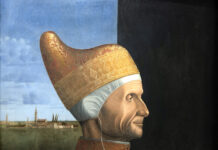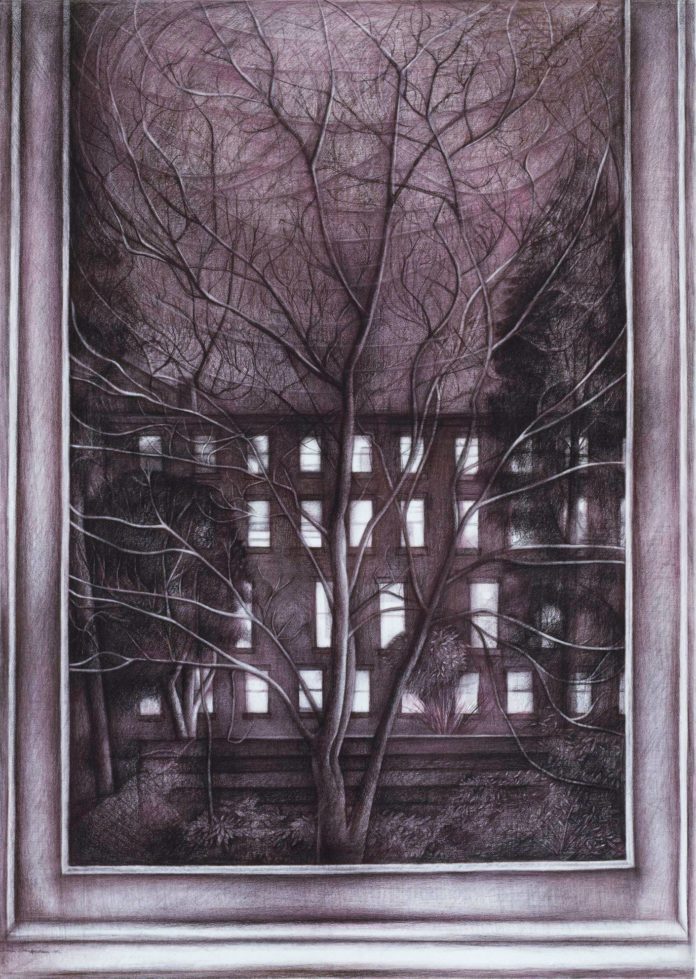
The Lasting World: Simon Dinnerstein and The Fulbright Triptych
Arnot Art Museum (New York), through June 30, 2018
Nevada Museum of Art, July 21, 2018 through January 7, 2019
Simon Dinnerstein has an exhibition at the Arnot Art Museum, featuring a selection of his art, including “The Fulbright Triptych,” a nearly life-size portrayal of his family. “There is a sense of ‘What the heck is this?’ and then you recover from that and you start falling into it,” says Peter Trippi, editor of Fine Art Connoisseur magazine, in an interview with NPR’s All Things Considered. “You back up away from it because you need to give yourself some distance, and you think, ‘This is slightly mad but also completely wonderful.'”
After viewing Dinnerstein’s “Night Scene 1,” I asked him to tell us a little more about it. Keep reading to see what his inspiration was, and to view more of his artwork.
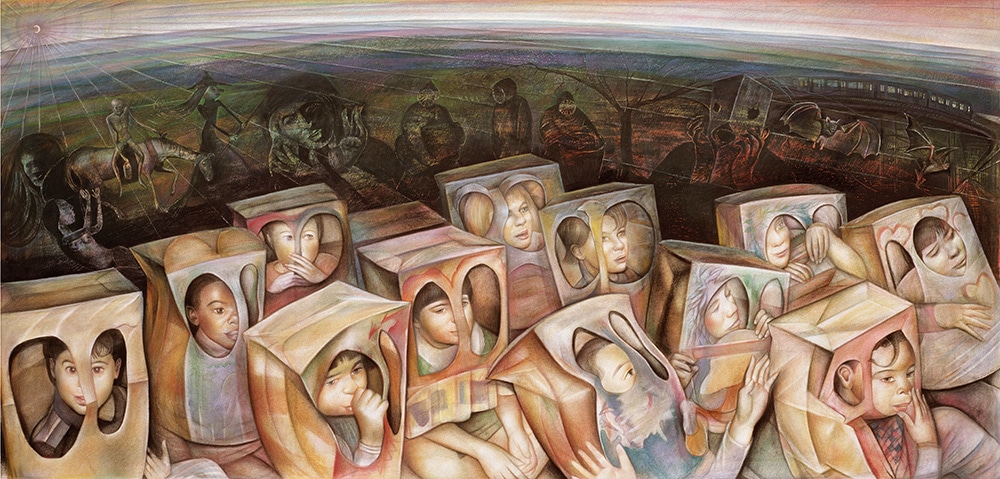
“One of my favorite movies is Alfred Hitchcock’s Rear Window,” Simon tells us. “In the film, a man (played by James Stewart) who is recovering from a leg fracture, sits looking through the window of his New York apartment, staring at the windows across a court. He thinks he sees something in one of the windows. He isn’t sure. The film deals with intense looking, with the difference between looking and seeing. The protagonist serves, perhaps, as a metaphor for the artist.
“What is it we are looking at? How do we make sense of the world . . . of reality?
“The windows in my drawing seem almost to glow and vibrate. The lights, as in many of the drawings in this exhibit, consist of the white of the paper, untouched or slightly touched. Thus the lights seem to come, mysteriously, from inside or under the drawing. In “Night Scene I,” the windows act as portals taking you deeper into the image. In like manner, in “The Fulbright Triptych,” the various reproductions, letters, children’s drawings, poems, act, similarly, as portals, bringing the viewer through a door and once inside, taking the viewer deep into the landscape.”
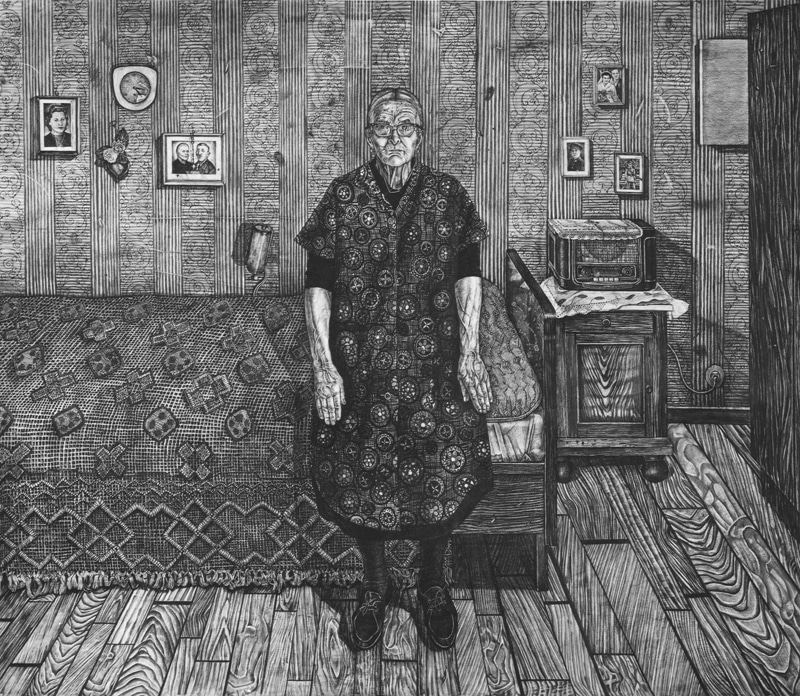
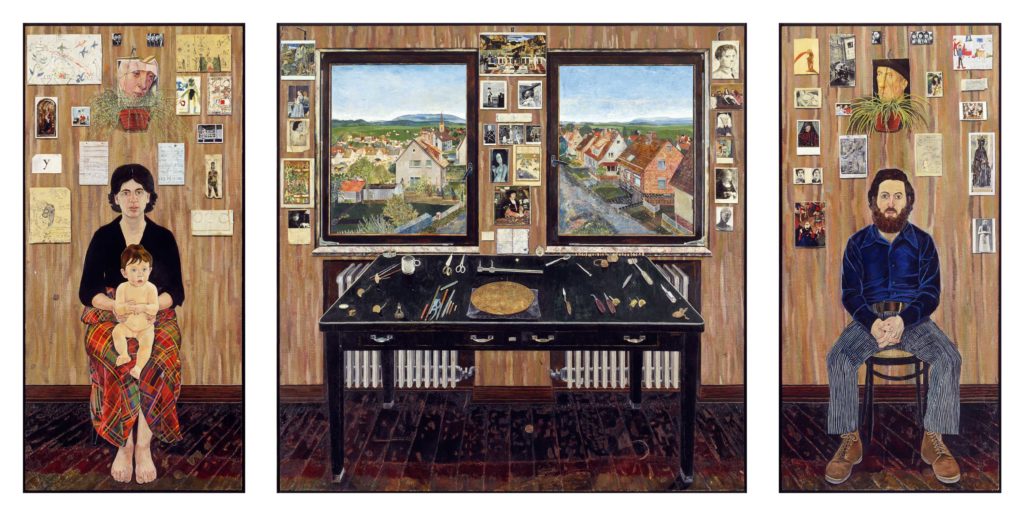
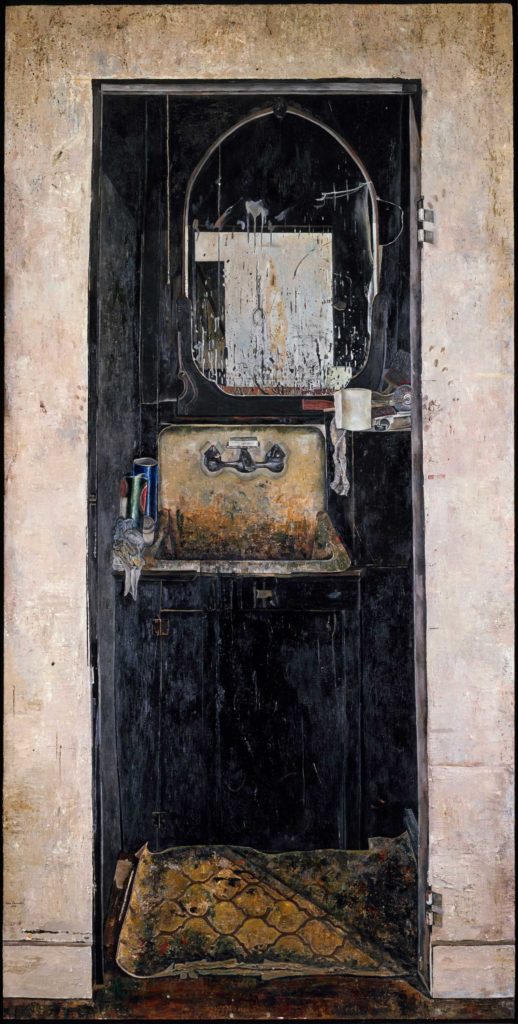
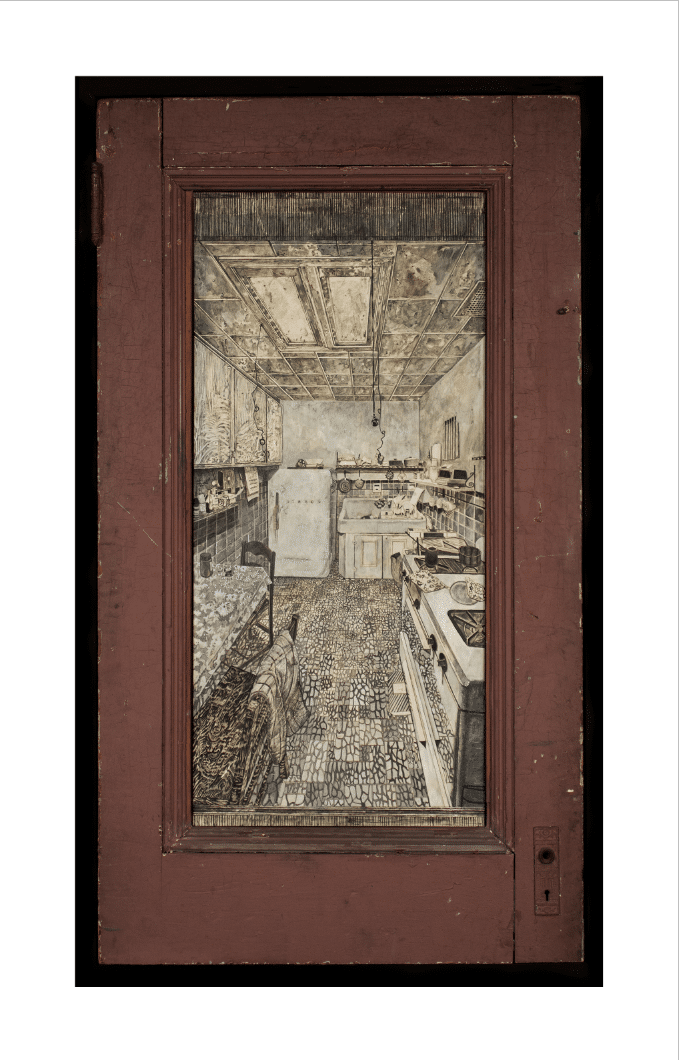
Sign up to receive Fine Art Today, the weekly e-newsletter from
Fine Art Connoisseur magazine.


